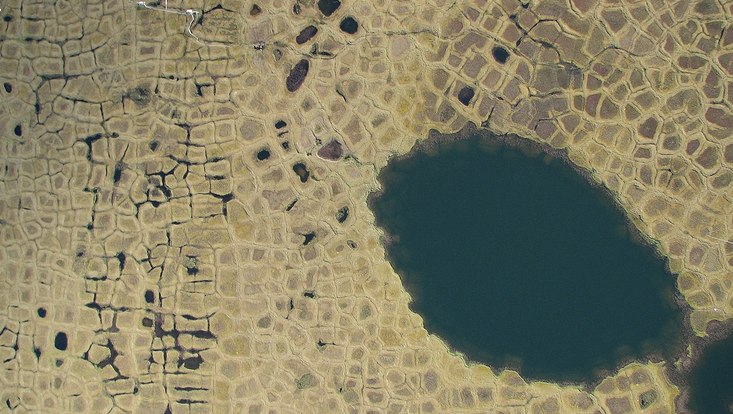and Society (CLICCS)
How much methane is released in the tundra
7 September 2023, by Niklas Keller

Photo: Julia Boike/AWI
Infinitely vast, not a tree in sight, and with permanently frozen soil: the tundra is an important carbon reservoir. Yet climate change is now warming the Arctic regions, causing permafrost to thaw. A team led by Leonardo A. Galera asked themselves: in which proportion are greenhouse gases released when permafrost soils thaw?
Given that methane is a far more potent greenhouse gas than carbon dioxide, higher methane emissions would have a more pronounced effect on climate warming. For their study, the researchers measured carbon dioxide and methane flows in dry and moist tundra soils on Samoylov Island in northeastern Siberia.
As the study shows: a thicker active layer and higher temperatures in the subsoil promote the decay of organic material. This is conducive to the production of methane. The researchers also discovered that, due to these factors, the ratio of carbon dioxide to methane shifted – that is, that more methane was produced in relation to carbon dioxide. Although carbon was also released, primarily as CO2 , in moist tundra soils the methane concentration was nearly seven percent. In contrast, it was less than 0.3 percent in dry soils. These new findings pave the way for new simulations and processes to more accurately predict climate future.
A. Galera, L., Eckhardt, T., Beer, C., Pfeiffer, E.A., Knoblauch, C. Ratio of In Situ CO2 to CH4 production and its environmental controls in polygonal Tundra soils of Samoylov Island, Northeastern Siberia. jrg Biogeosciences 128,4 (2023).
https://agupubs.onlinelibrary.wiley.com/doi/10.1029/2022JG006956
CLICCS Quarterly
The article was published in CLICCS Quarterly magazine, the news from the Cluster of Excellence every three month.


